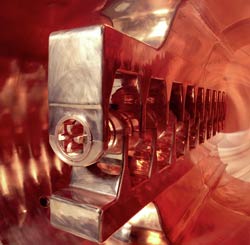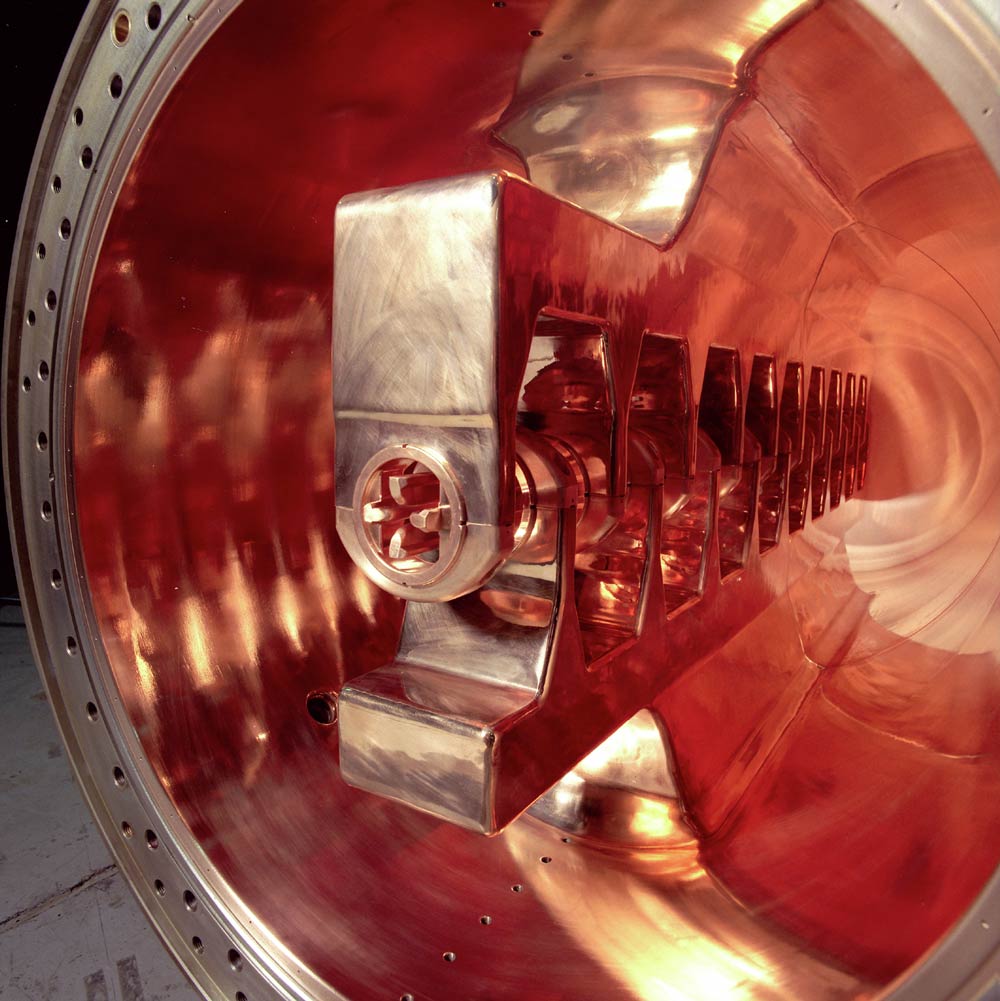A Nuclear Magic Trick
For elements at the bottom of the periodic table, the precise count of protons and neutrons can make or break a nucleus, determining whether it will fall apart in milliseconds or enjoy a long life, measured in seconds. In the 15 December Physical Review Letters, researchers report the first creation of the long-lived nucleus hassium-270, a “doubly magic” combination of 108 protons and 162 neutrons. The discovery bolsters theoretical predictions of similar stable isotopes and suggests theorists are making progress in understanding the exotic world of the nucleus.
As you move down the periodic table toward larger nuclei, protons and neutrons are added in an orderly manner, slotted into individual states defined by quantum mechanics. At certain “magic numbers,” the neutrons or protons completely fill a set of available slots, forming a so-called closed shell in which the particles are more strongly bound together than when some slots are vacant.
Since the 1960s, nuclear theorists studying superheavy nuclei have predicted an “island of stability” around the nucleus with 114 protons and 184 neutrons–both magic numbers, making it “doubly magic.” Although nuclei on this not-yet-reached island would be unstable, their closeness to a doubly magic nucleus could give them lifetimes thousands or millions of times longer than those away from the island. In October, physicists discovered a new element, with nuclei containing 118 protons and 176 neutrons [1], lying at the outer edge of this predicted island, but so far the shape and even the existence of this island remain largely unconfirmed. Newer theories also predict a smaller island of stability centered on the slightly lighter but also doubly magic isotope hassium-270, which has 108 protons and 162 neutrons.
Jan Dvorak of the Technical University in Munich, Germany, and 23 colleagues now claim to be the first to have created hassium-270 nuclei–four of them, to be precise. The group used a particle accelerator at the Institute for Heavy Ion Research (GSI) in Darmstadt, Germany, to slam magnesium-26 ions at high speed into a target of curium-248. Once in a while the beam and target nuclei stuck together, shedding a few particles to leave behind hassium-269, hassium-270, and other short-lived heavy elements. By quickly flushing out the reaction area with a stream of hot, chemically active gas, the researchers separated hassium nuclei from other products.
Dvorak and his colleagues weren’t able to measure the lifetime of the hassium-270 nuclei directly, because they couldn’t see the exact moment they were created. Instead, they measured the energies of alpha particles the nuclei produced as they decayed and used standard theory to infer an approximate half-life of 22 seconds–remarkably long for superheavy nuclei. This lifetime fits with theoretical estimates, providing direct evidence for this new island of stability. The region of stability might even form a bridge extending to the expected island around 114 protons and 184 neutrons, the researchers argue.
The team also created a few hassium-269 nuclei but couldn’t estimate their half-life. Previous experiments at Darmstadt and in Japan, however, showed that it is also relatively long-lived, with a half-life of about 14 seconds.
Nancy Stoyer of Lawrence Livermore National Laboratory in California says the rapid separation method used in this study is especially important. “It allows use of chemistry to clean up the background, and you can learn a little bit about what’s going on chemically.” The fact that hassium-270 and hassium-269 behaved in chemically similar ways but decayed differently bolsters the group’s claim that they’ve spotted a new isotope, she adds.
–Mason Inman
Mason Inman is a freelance science writer in San Francisco.
References
- Yu. Ts. Oganessian et al., “Synthesis of the Isotopes of Elements 118 and 116 in the 249Cf and 245Cm + 48Ca fusion reactions,” Phys. Rev. C 74, 044602 (2006)
More Information
Livermore News Release on element 118 discovery, including animation of the experiment that generated the superheavy nuclei





